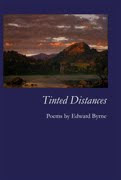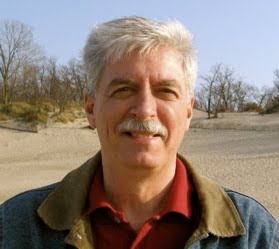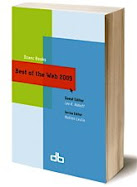 When I was a small boy just learning about the world around me, my grandfather often served as a guide for walks on the streets of Brooklyn. Already an older man who to my surprise had been born more than a decade before the beginning of the twentieth century, he and I had formed an odd bond that others in my family recognized as unique. Indeed, in later years as my grandfather entered his eighties then nineties, and his personality seemed to recede into reticence, he and I still were able to engage in long conversations nobody else shared. Sometimes, the tales he told me were ones I had heard numerous times before, but I never let on that I knew the stories. In fact, each time I would again ask questions and press him for further information, knowing he’d forgotten to include a few details he had related with relish in previous narrations.
When I was a small boy just learning about the world around me, my grandfather often served as a guide for walks on the streets of Brooklyn. Already an older man who to my surprise had been born more than a decade before the beginning of the twentieth century, he and I had formed an odd bond that others in my family recognized as unique. Indeed, in later years as my grandfather entered his eighties then nineties, and his personality seemed to recede into reticence, he and I still were able to engage in long conversations nobody else shared. Sometimes, the tales he told me were ones I had heard numerous times before, but I never let on that I knew the stories. In fact, each time I would again ask questions and press him for further information, knowing he’d forgotten to include a few details he had related with relish in previous narrations.Once, when I was probably about three or four years old and walking along Flatbush Avenue with my grandfather, he and I came upon an enormous street-corner construction site surrounded by a tall wooden wall with several little oval openings through which passersby could view the huge excavation where a multi-storied office building was planned. The peepholes were at eye-level height for an average adult, so my grandfather (still strong, not yet frail) hoisted me on his shoulder to lean forward and glimpse the fenced-off area filled with earth-moving equipment, cement mixers, and dozens of helmeted men oblivious to the observers outside their workspace. When I asked my grandfather, who himself had at times done such labor and admired the skills necessary, what the workers were building on the other side of the barrier, he simply replied: “They’re setting a foundation for the future work.”
For nearly a year, each afternoon when we passed that intersection with the corner under construction, we’d mark the progress of what I had come to regard as “the future work,” and I would picture its ultimate appearance in my mind. (Since then, I have always associated that series of peepholes lined along the wooden wall, allowing quick glimpses at a growing structure taking shape, with ways to examine beyond the present using one’s imagination.) I looked forward to witnessing the finished building. Indeed, my grandfather and I noticed the tentative dates for completion and a grand opening ceremony optimistically had been stenciled on the wall for all to read. On one occasion, as the calendar pages turned closer to the advertised date, my grandfather jokingly remarked to me about how then the future would become the present, and the peepholes, no longer needed, would be gone.
Nevertheless, even nowadays as construction continues on a large campus building rising beside my own office building, I repeatedly have stopped the last two semesters to peek through the peepholes along the safety barriers (although these openings are shaped more like elongated slots) and to gauge the growth of the structure on the other side, keeping in mind my grandfather’s words of wise advice (once spoken to me as the site we visited approached completion) suggesting that we need to appreciate everything presented to us. When I expressed frustration at the slow development of the construction and an eagerness for the end product to be part of the present, he counseled patience and recommended to always remain amazed by the days already given, as well as thankful for those that yet may lie ahead. Considering my obsession on the present, he held one hand in front of my eyes and snapped his fingers, advising that was how long the present lasts, while our past remains forever in our memories and our future extends ahead until the day we die.
My grandfather’s attitude toward life might have been fashioned during his service in World War I. As an infantryman in the famous Fighting 69th, a New York unit known for its ranks of soldiers with Irish heritage, my grandfather fought in some of the most difficult battles in Europe. Although the regiment, like all others, technically had been renumbered (as the 165th Infantry), tradition and pride among the men held on to the Fighting 69th title, which had been instituted during the Civil War when a volunteer force of Irish-American New Yorkers was formed. As part of the 42nd Rainbow Division, my grandfather’s company saw some of the fiercest fighting and suffered some of the highest numbers of casualties. Many of the men have been memorialized as heroic figures, including “Fighting” Father Duffy, who waded in the midst of battle to comfort the soldiers though remaining unarmed himself because of his religious convictions. Other legendary men among the 69th included William “Wild Bill” Donovan, the company commander, and Joyce Kilmer, the celebrated poet who was killed in the Battle of Reims during the summer of 1918.
When my grandfather recounted the conflicts he experienced, he frequently would reference those three as men he was proud to fight alongside. However, he also would speak of others who were wounded and died, some of whom he never could remember their names, yet described their features as if they were freshly planted in his memory. In addition, my grandfather would relate the situations in which he had been wounded. The first time he was caught in a cloud of mustard gas and so overcome by the chemicals that not only were inhaled, but also became absorbed by a soldier’s uniform and seeped into his skin. He recalled the swelling, the blisters, the burning sensation, and the difficulty breathing, as well as the horrible sickness that lingered for weeks.
Still, when well, my grandfather returned to the front to fight once more alongside the men in his regiment, only to be wounded again. The bullet that struck my grandfather went clear through his left leg near the knee, leaving an entrance hole and exit wound that eventually remained as everyday reminders for my grandfather the rest of his life; however, after a period of recovery, he joined his unit a third time at the front.
The bullet holes had shaped themselves into little circles of scars, one slightly larger than the other, and my grandfather would lift his loose pant leg to display them when telling his account of the action. Each time he would point to where the bullet had entered, he’d try to smile through his slight grimace (as if feeling the sharp pain again), and I felt as though the wound represented a metaphoric peephole permitting me a tiny glimpse into his past.
In addition, when he shared with sadness and with pride his stories about the war, my grandfather would pull a small box from a cupboard drawer to show me the ribbons and medals he’d received. Carefully extending his hand as he reached toward me, he explained each one, indicating the meaning of the colorful stripes or the engraved images. As well, he would gently rub his thumb over the raised inscription on the back of the Purple Heart: “FOR MILITARY MERIT: John J. Gilroy.” He’d ask me to hold them in my hands, and I would cup them as if they were sacred objects, much the way as an altar boy I’d seen the parish priest curve his hands around the host when blessing it during communion at Sunday mass.
A number of times I attended parades on Eastern Parkway and elsewhere in which my grandfather marched among fellow veterans of World War I on Memorial Day or for the Fourth of July. The Fighting 69th has been the subject of lore in various forms, including a 1940 film starring James Cagney that my grandfather and I had once watched together on his old black-and-white television. There have been documentaries filmed about the regiment and its most famous men, like Father Duffy and the Fighting 69th’s three World War I Medal of Honor winners. A contemporary song, “The Fighting 69th” by the Dropkick Murphys, can even be heard on YouTube.
My grandfather died at the age of 93 as I was taking the last test of my week-long Ph.D. exams. I had already published a couple of collections of poetry, and I had enjoyed mentioning that to my grandfather. Although by the end of his life an acute awareness of the world around him had lessened due to deteriorating health, whenever we met I’d remind him I was writing poems the way Joyce Kilmer—the poet-soldier who lost his life fighting alongside my grandfather—had done. He’d nod as if in understanding and in approval.
I have always connected the coincidence in timing of my grandfather’s death as it was tied to my completion of the Ph.D., which to me seemed like the last step in the process of establishing a foundation for the future work toward which I had been building. Oddly enough, an area of investigation in my doctoral studies involved appraising the ways poems tinkered with time, especially the elegy, which employed memory and served as an opening permitting a momentary view into the past, or the brief imaginative lyric poem, which acted as the little peephole with magnifying glass in a front door allowing us to safely perceive what occurs in the wider, and sometimes wilder, world on the outside of our own existence.
This weekend, as I do each Memorial Day, I again hold in my hands the ribbons and medals my grandfather had earned in World War I, including his Rainbow Division patch and his Purple Heart adorned with an oak leaf cluster representing the valor of one who went back into battle and suffered a second wounding. The ribbons and medals awarded to my grandfather also remind me of the stories he told during the wonderful times I spent with him, about which I once wrote the following elegiac poem that appeared in one of my books ten years ago:
IF APPROACHED, HE MIGHT RECOGNIZE ME
He sits wearing an undershirt on the soft
sofa, half asleep and curved in a pose
that resembles the arched outlines of the oak
trees beyond the orchard fence, and fingers
the metal-rimmed glasses still not quite
powerful enough. He holds no grudge,
is not yet eccentric, and though he doesn’t
admit this frail body is any longer his,
seems confused by the strange single-minded
satisfaction he receives when he opens
the shutters to watch the workmen fill in
the trenches exposed at the edge of his clean
evening. If approached, he might recognize me.
With a subtle gesture he’d call me closer, tell me
of an encounter in France, the singed forests,
or the elegant fountains of Paris. He might
even recollect a song, the names of victims,
or the pain of lungs in a gas cloud. Then
with a faint smile, crouching to touch below
his knee, he’d point to the entry wound still visible,
and, once again, I’d glimpse into that peephole.
[“If Approached, He Might Recognize Me” appeared in East of Omaha, published by Pecan Grove Press in 1998.]




























3 comments:
Loved It......
I learned alot that I didn't know.
Thanks.
Patricia
Ed, this is a lovely remembrance, both in personal essay and poetry, of your grandfather. Thanks for sharing your "peephole" to the past.
I LOVED this article. I remember him picking up his pant leg to show us the scar of the bullet hole in his leg and his description of how it passed through and came out the other side. I felt as though I were listening to him, once again, recount his experiences. Thanks so much for bringing a smile to my face! Love you.
Post a Comment